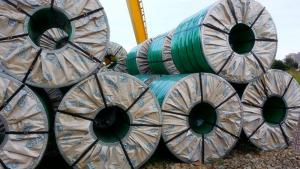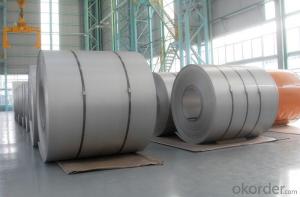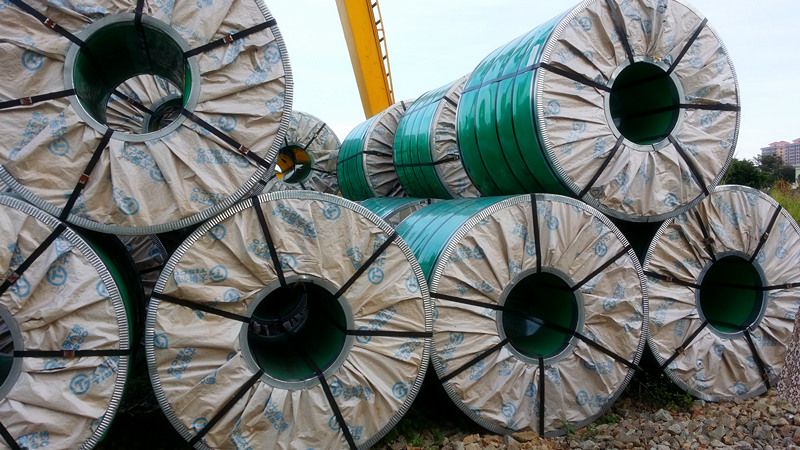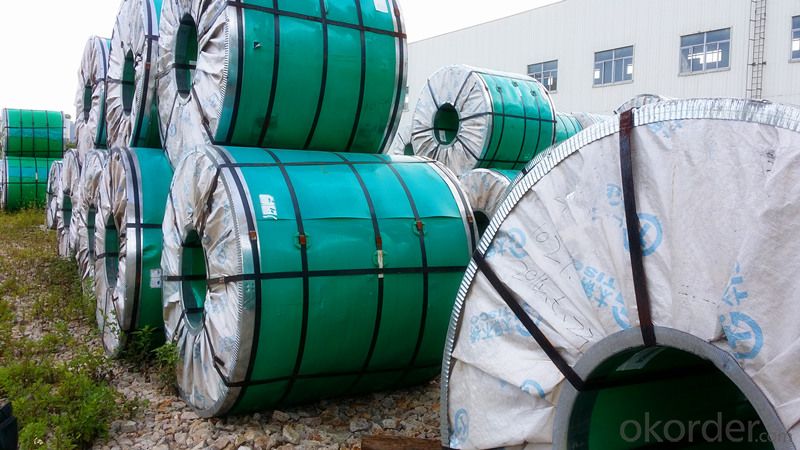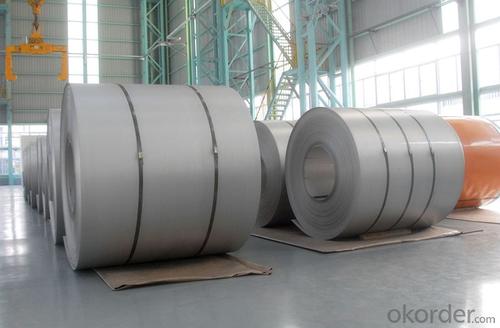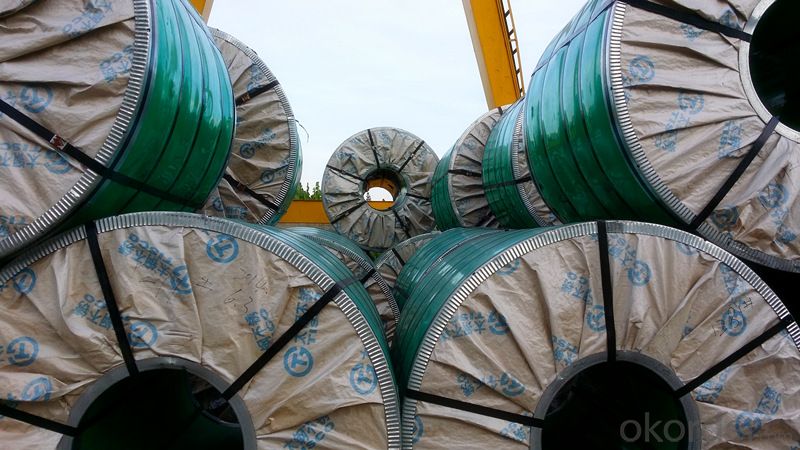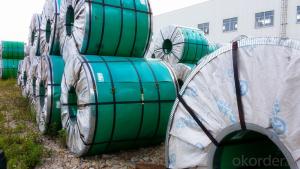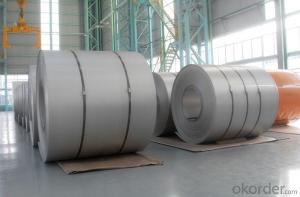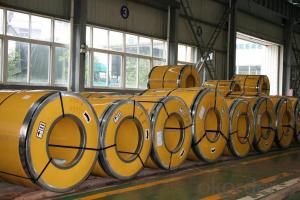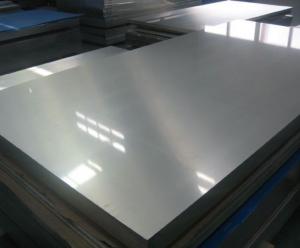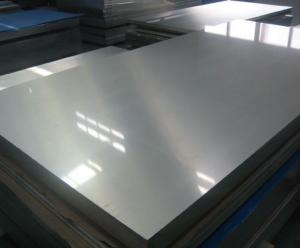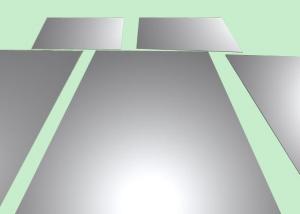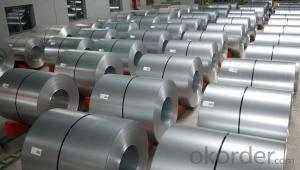Hot Rolled Stainless Steel Coil 430R
- Loading Port:
- Guangzhou
- Payment Terms:
- TT OR LC
- Min Order Qty:
- -
- Supply Capability:
- 10000 m.t./month
OKorder Service Pledge
OKorder Financial Service
You Might Also Like
Grade: | 400 Series | Standard: | JIS,AISI,ASTM,GB,DIN,EN | Length: | Coil |
Thickness: | 2.5mm,3.0mm, 4.0mm | Width: | 1000mm, 1219mm, 1240mm, 1500mm | Place of Origin: | China Mainland |
Brand Name: | CNBM | Model Number: | 430R | Type: | Coil |
Application: | Element Supports,Stove trim rings,Fasteners,Chimney Liners | Certification: | ISO | Certificate: | ISO9001:2008 |
Surface: | No.1 | Technique: | Hot Rolled | Experience: | About 20 years |
Stock Information: | In stock | Weight per coil: | 18-22 tons | Tolerance: | +/-0.1mm or less |
Model No.: | 430R |
|
|
|
|
Hot Rolled Stainless Steel Coil 430R No.1 Finish
Article | Hot Rolled Stainless Steel Coil 430R |
Grade | 400 series |
Specification | 1m, 1.2m, 1.5m |
Surface | No.1 |
Type | Sheet / Coil |
Width | 1000mm, 1219mm, 1240mm, 1500mm |
Thickness | 2.5mm,3.0mm, 4.0mm |
Brand name | CNBM |
Parking | seaworthy wooden pallets or wooden cases,in 20' or 40' container or as per customers' requirements |
Payment | 30% in advance,70% after shipping, or L/C at sight |
Delivery Time | Stock materials, within7-15 days after received the deposit of T/T or L/C |
Hot Rolled Stainless Steel Coil 430R No.1 Finish
Grade | C | Cr | Si | Mn | Mo | Ni | P | S |
| Max |
| Max | Max |
| Max | Max | Max |
430R | 0.12 | 16.0-18.0 | 0.75 | 1.00 | ----- | 0.6 | 0.04 | 0.03 |
- Q: What are the different types of surface defects in stainless steel strips?
- There are several types of surface defects that can occur in stainless steel strips, including scratches, pits, dents, stains, and discoloration. These defects can occur during manufacturing, handling, or due to environmental factors. It is important to identify and address these defects to ensure the quality and performance of the stainless steel strips.
- Q: Can stainless steel strips be used in the production of kitchen sinks?
- Yes, stainless steel strips can be used in the production of kitchen sinks. Stainless steel is a popular material choice for kitchen sinks due to its durability, corrosion resistance, and ability to maintain a clean and hygienic surface. Stainless steel strips can be shaped and welded to create the various components of a kitchen sink, such as the basin and drainboard. The strips can also be polished to achieve a smooth and sleek finish. Additionally, stainless steel strips offer ease of maintenance and long-lasting performance, making them a suitable choice for kitchen sink production.
- Q: Can stainless steel strips be used in mining applications?
- Yes, stainless steel strips can be used in mining applications. Stainless steel is known for its durability, corrosion resistance, and high strength, making it suitable for various challenging environments, including mining operations. It can be utilized in mining equipment, machinery, conveyor systems, and other components that require resistance against harsh conditions and chemicals commonly found in mining sites.
- Q: Can stainless steel strips be used for jewelry findings?
- Yes, stainless steel strips can be used for jewelry findings. Stainless steel is a popular choice for jewelry findings due to its durability, corrosion resistance, and affordability. It is suitable for various types of jewelry findings such as clasps, jump rings, chain links, and earring hooks. Stainless steel strips can be easily shaped, cut, and polished to create different jewelry components. They are also available in different finishes, including polished, brushed, or matte, providing a wide range of options for jewelry makers. Stainless steel jewelry findings are hypoallergenic, making them suitable for individuals with sensitive skin or allergies to other metals. Overall, stainless steel strips are a versatile and practical choice for jewelry findings.
- Q: Are stainless steel strips resistant to acetic acid?
- Yes, stainless steel strips are generally resistant to acetic acid. Stainless steel is known for its corrosion-resistant properties, which make it suitable for a wide range of applications, including those involving exposure to acids. Acetic acid, commonly found in vinegar, is a weak acid and does not typically cause significant corrosion or damage to stainless steel. However, prolonged exposure to high concentrations of acetic acid or other aggressive acids can still lead to corrosion in certain grades of stainless steel. Therefore, it is important to consider the specific grade and composition of the stainless steel strips when assessing their resistance to acetic acid.
- Q: Are 111 stainless steel strips resistant to intergranular corrosion?
- Yes, 111 stainless steel strips are resistant to intergranular corrosion.
- Q: Can stainless steel strips be used in the oil refinery equipment?
- Indeed, it is possible to utilize stainless steel strips in the equipment of oil refineries. Stainless steel, being an incredibly durable and resistant material against corrosion, proves itself suitable for deployment in challenging environments like oil refineries. Its exceptional resistance to corrosion, high temperatures, and chemical exposure plays a crucial role in the oil refining procedure. To ensure the longevity and functionality of refinery operations, stainless steel strips can be employed in various components of oil refinery equipment, including heat exchangers, pipes, tanks, and valves. Moreover, stainless steel's ease of cleaning and maintenance renders it the preferred choice in the oil refining industry.
- Q: What is the fatigue strength of stainless steel strips?
- The fatigue strength of stainless steel strips varies depending on several factors such as the specific grade of stainless steel, the thickness and width of the strips, and the specific loading conditions. Generally, stainless steel has good fatigue strength compared to other materials, especially when compared to non-ferrous metals. However, it is recommended to refer to the specific material data sheet or consult with an engineer to determine the fatigue strength of a particular stainless steel strip.
- Q: Are stainless steel strips suitable for high-temperature applications?
- Stainless steel strips prove to be an appropriate option for high-temperature applications. Possessing exceptional heat resistance properties, stainless steel exhibits remarkable resistance to oxidation and corrosion when exposed to elevated temperatures. Even under high temperatures, it sustains its strength and structural integrity, rendering it ideal for utilization across diverse sectors such as automotive, aerospace, and energy. Moreover, stainless steel strips display thermal stability and minimal thermal expansion, enabling them to endure thermal cycling and uphold dimensional stability. Furthermore, stainless steel's elevated melting point qualifies it for tasks necessitating exposure to extreme heat. In conclusion, stainless steel strips stand as a dependable choice for high-temperature applications owing to their extraordinary heat resistance properties.
- Q: Can stainless steel strips be used in textile machinery?
- Indeed, textile machinery can utilize stainless steel strips. Stainless steel, a highly flexible material, boasts remarkable resistance against corrosion, significant strength, and outstanding durability. These attributes render it suitable for a myriad of purposes in the textile sector, encompassing textile machinery. Weaving machines, spinning machines, knitting machines, and other machinery components that necessitate robustness and resilience against deterioration can all accommodate stainless steel strips. Moreover, stainless steel strips are effortlessly cleaned and maintained, thereby serving as an impeccable choice for textile machinery that encounters fibers, dyes, and various chemicals.
Send your message to us
Hot Rolled Stainless Steel Coil 430R
- Loading Port:
- Guangzhou
- Payment Terms:
- TT OR LC
- Min Order Qty:
- -
- Supply Capability:
- 10000 m.t./month
OKorder Service Pledge
OKorder Financial Service
Similar products
Hot products
Hot Searches
Related keywords
